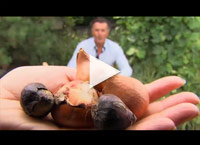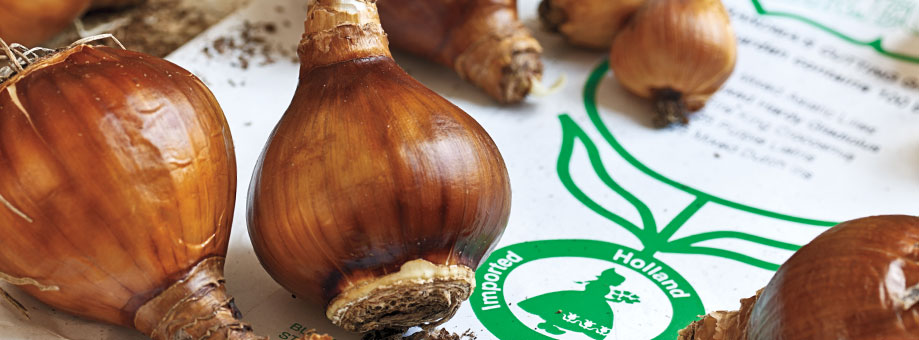- New
Check Out Our New VarietiesX
-
Fall-Planted Bulbs
Fall Planting for Spring Blooms X
-
Spring-Planted Bulbs
Spring Planting for Summer Blooms X
-
Sun Perennials
Create Brilliant Borders with Sun-Loving Plants X
-
Shade Perennials
Brighten Up Shady Spots with Much Needed ColourX
- Super Sak®
- Garden Essentials
Most bulbs are perennial plants, many of which can be used for naturalizing. They have a period of growth and flowering. This is followed by a period of dormancy, during which they die back to
ground level at the end of each growing season. That comes in late spring or early summer for spring-flowering bulbs. They begin regrowing in the fall before flowering again the next year.
Flowering bulbs are an important addition to any landscape or garden. They provide a good investment for money spent and supply years of colour in your yard. The great variety of bloom colour, flowering time, plant height and flower shape are all good reasons to add bulbs to your landscape. Fall is the prime time for planting hardy, spring-flowering bulbs, and most can go into the ground until it is frozen.
There are some general rules to follow when planting bulbs. Don't plant them under aggressive ground covers or dense turf grass. Make sure you are planting in a sunny location with at least half a day's exposure. With early and mid spring flowering bulbs, the trees are not yet in full leaf, so you may plant these bulbs under trees. For all other bulbs, the best way to confirm that the flower will receive enough light is to choose a site after nearby trees are in full leaf. As a rule of thumb, plant bulbs when the soil temperature is about 15°C at a depth of 15 cm. The cool soil stimulates root growth.
If you are planting an entire bulb bed, you can spade the whole bed area and then dig out the top 15-20 cm of soil. Place your bulbs atop the remaining loosened soil. After you have set them in place, you may want to add a bit of Breck's Food for Bulbs and Perennials. Then cover the bulbs with the removed soil and water thoroughly. For planting smaller groups or individual bulbs, you can use a simple garden trowel. Dig a hole a bit larger than the bulb, making sure to loosen the soil at the bottom of the hole and treat it like a miniature bed (as described above). You may prefer to use a bulb planter, which digs uniform holes. Treat each hole as described above for planting with a trowel. Whichever way you choose to plant your bulbs, remember to always follow the specific instructions that come with your bulbs.
 One of your first considerations when planning a garden should be bloom time. Think about what time of year you'd like to see the most flowers and know when to plant your bulbs to make it happen. The possibilities for your garden are endless-explore all of
our flowering bulbs to turn your garden into a year-round showcase of blooms!
One of your first considerations when planning a garden should be bloom time. Think about what time of year you'd like to see the most flowers and know when to plant your bulbs to make it happen. The possibilities for your garden are endless-explore all of
our flowering bulbs to turn your garden into a year-round showcase of blooms!
Flowering bulbs are an important addition to any landscape or garden. They provide a good investment for money spent and supply years of colour in your yard. The great variety of bloom colour, flowering time, plant height and flower shape are all good reasons to add bulbs to your landscape. Fall is the prime time for planting hardy, spring-flowering bulbs, and most can go into the ground until it is frozen.
There are some general rules to follow when planting bulbs. Don't plant them under aggressive ground covers or dense turf grass. Make sure you are planting in a sunny location with at least half a day's exposure. With early and mid spring flowering bulbs, the trees are not yet in full leaf, so you may plant these bulbs under trees. For all other bulbs, the best way to confirm that the flower will receive enough light is to choose a site after nearby trees are in full leaf. As a rule of thumb, plant bulbs when the soil temperature is about 15°C at a depth of 15 cm. The cool soil stimulates root growth.
If you are planting an entire bulb bed, you can spade the whole bed area and then dig out the top 15-20 cm of soil. Place your bulbs atop the remaining loosened soil. After you have set them in place, you may want to add a bit of Breck's Food for Bulbs and Perennials. Then cover the bulbs with the removed soil and water thoroughly. For planting smaller groups or individual bulbs, you can use a simple garden trowel. Dig a hole a bit larger than the bulb, making sure to loosen the soil at the bottom of the hole and treat it like a miniature bed (as described above). You may prefer to use a bulb planter, which digs uniform holes. Treat each hole as described above for planting with a trowel. Whichever way you choose to plant your bulbs, remember to always follow the specific instructions that come with your bulbs.
 One of your first considerations when planning a garden should be bloom time. Think about what time of year you'd like to see the most flowers and know when to plant your bulbs to make it happen. The possibilities for your garden are endless-explore all of
our flowering bulbs to turn your garden into a year-round showcase of blooms!
One of your first considerations when planning a garden should be bloom time. Think about what time of year you'd like to see the most flowers and know when to plant your bulbs to make it happen. The possibilities for your garden are endless-explore all of
our flowering bulbs to turn your garden into a year-round showcase of blooms!
Have another question? Return to the Customer Service Help page or send an e-mail directly to Customer Service.









